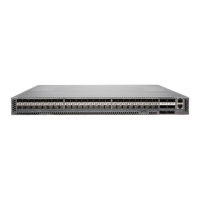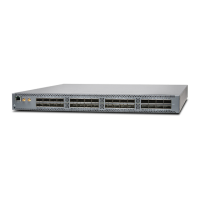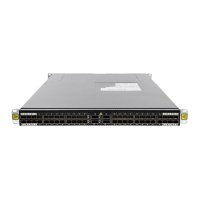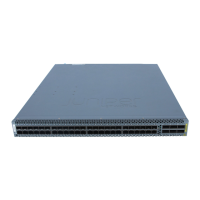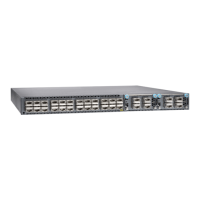Related
Documentation
Mounting a QFX3100 Director Device on Four Posts in a Rack or Cabinet on page 217•
• Mounting a QFX3100 Director Device on Two Posts in a Rack or Cabinet on page 215
Cabinet Requirements for a QFX3008-I Interconnect Device
You can mount a QFX3008-I Interconnect device in a cabinet that contains a 19-in. rack
as defined in Cabinets, Racks, Panels, and Associated Equipment (document number
EIA-310-D) published by the Electronics Industry Association.
Cabinet requirements consist of:
•
Cabinet size and clearance
•
Cabinet airflow requirements
Table 27 on page98 summarizes cabinet requirements and specifications for a QFX3008-I
Interconnect device.
Table 27: Cabinet Requirements and Specifications for a QFX3008-I Interconnect Device
Guidelines for the QFX3008-I Interconnect Device
Cabinet
Requirement
•
The minimum depth required to accommodate a QFX3008-I Interconnect device is 39.52 in. (100.38
cm). Large cabinets improve airflow and reduce the chance of overheating.
A U is the standard rack unit defined in Cabinets, Racks, Panels, and Associated Equipment (document
number EIA-310–D) published by the Electronics Industry Association.
•
With adequate cooling air and airflow clearance, you can stack two devices in a cabinet that has at
least 42 U of usable vertical space. In all cases, the rackmust meet the strength requirements to support
the weight of the installed devices.
Cabinet size and
clearance
When you mount the device in a cabinet, ensure that ventilation through the cabinet is sufficient to prevent
overheating. Consider the following requirements list when planning for chassis cooling:
•
Ensure that the cool air supply you provide through the cabinet adequately dissipates the thermal
output of the device (or devices).
•
Ensure that the cabinet allows the chassis hot exhaust air to exit the cabinet without recirculating into
the device. An open cabinet (without a top or doors) that employs hot air exhaust extraction from the
top allows the best airflow through the chassis. If the cabinet contains a top or doors, perforations in
these elements assist with removing the hot air exhaust. For an illustration of chassis airflow, see
“Clearance Requirements for Airflow and Hardware Maintenance for a QFX3008-I Interconnect Device”
on page 100.
•
The device fans exhaust hot air through the rear of the chassis. Install the device in the cabinet in a way
that maximizes the open space on the rear of the chassis. This maximizes the clearance for critical
airflow.
•
Route and dress all cables to minimize the blockage of airflow to and from the chassis.
•
Ensure that the spacing of rails and adjacent racks allows for the proper clearance around the switch
and rackas specified in “Clearance Requirements for Airflow and HardwareMaintenance for a QFX3008-I
Interconnect Device” on page 100.
Cabinet airflow
requirements
Related
Documentation
Rack-Mounting and Cabinet-Mounting Warnings on page 179•
• Rack Requirements for a QFX3008-I Interconnect Device on page 95
Copyright © 2012, Juniper Networks, Inc.98
QFX3000 Hardware Documentation
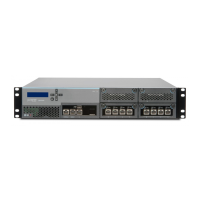
